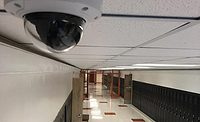Throughout the United States, gun violence has affected individuals, communities and organizations across industries, including retail, education, healthcare and more. As security leaders across the country evaluate their organizations’ risk level and safety needs, some have turned to weapons detection systems (WDS). These systems need to be continually checked to ensure compliance and safety in a facility.
Organizations that use weapons detection technology need to determine whether their system is up to date in order to protect their communities from security threats. Below is a useful list of best practices to make sure any system, regardless of the type of business entity, facility or building, is performing as it should.
In the fast paced world of security technology, there’s always new hardware and software coming out. What’s important for any organization is to understand the documentation, processes and testing hygiene necessary to keep guns out of buildings and keep communities safe.
Threat levels and measures
Security professionals must ask themselves whether their organizations have current, up to date daily threat level documentation for their facility and what measures are in place to safely protect employees and guests.
Weapons detection systems that aren’t up to date could, from a legal standpoint, cause an organization to be judged negligent and be denied insurance coverage of an incident. Make sure there is adequate daily documentation for any walk-through metal detectors (WTMD) or WDS. This documentation not only helps ensure the system is running as it should, but also helps security teams prepare in advance in the event of an incident that requires such documentation.
Daily government standards testing
Once security teams set up documentation procedures focused on insurance liability, organizational security hygiene needs to pass the government standard for their individual threat level. A security professional must be able to answer the question, “Does the organization have a clear and documented policy for each threat level and corresponding standard settings that’s been agreed upon by the legal team?”
Ensuring the system works properly to defend employees and users, as well as documenting why WDS settings and levels are where they are, are critical steps to maintaining compliance with security systems. For example, if the security team at an organization decides to adjust the settings on a weapons detection system to allow people to enter the building faster, they may use a setting that will not pass the security standard for a given industry. Testing and documenting the weapons detection system against government standards can help reduce this non-compliance risk.
Having the proper measures in place that follow the Law Enforcement and Corrections Standards and Testing Program from the U.S. Department of Justice (DOJ) can provide an organization with the necessary foundation to keep its people safe. Consult trusted security advisers and the legal department to determine the organization’s risk level and what steps to take to reach the proper compliance. For weapons detection, a good place to start can be to place the device’s security settings at a level that detects weapons or a testing sample in several orientations, including at ankle, knee, hip, chest and 70-inch heights, and then at the left, right and center of each of those heights. Additionally, the device should alert 100% of the time. These settings make up the basic requirements to check for consistency of detection throughout the total plane of detection.




